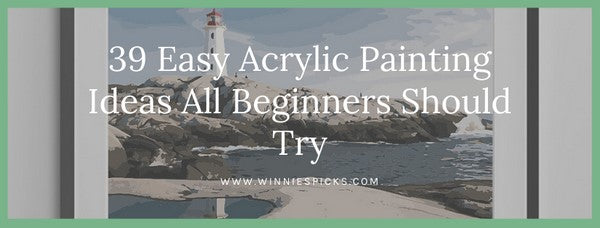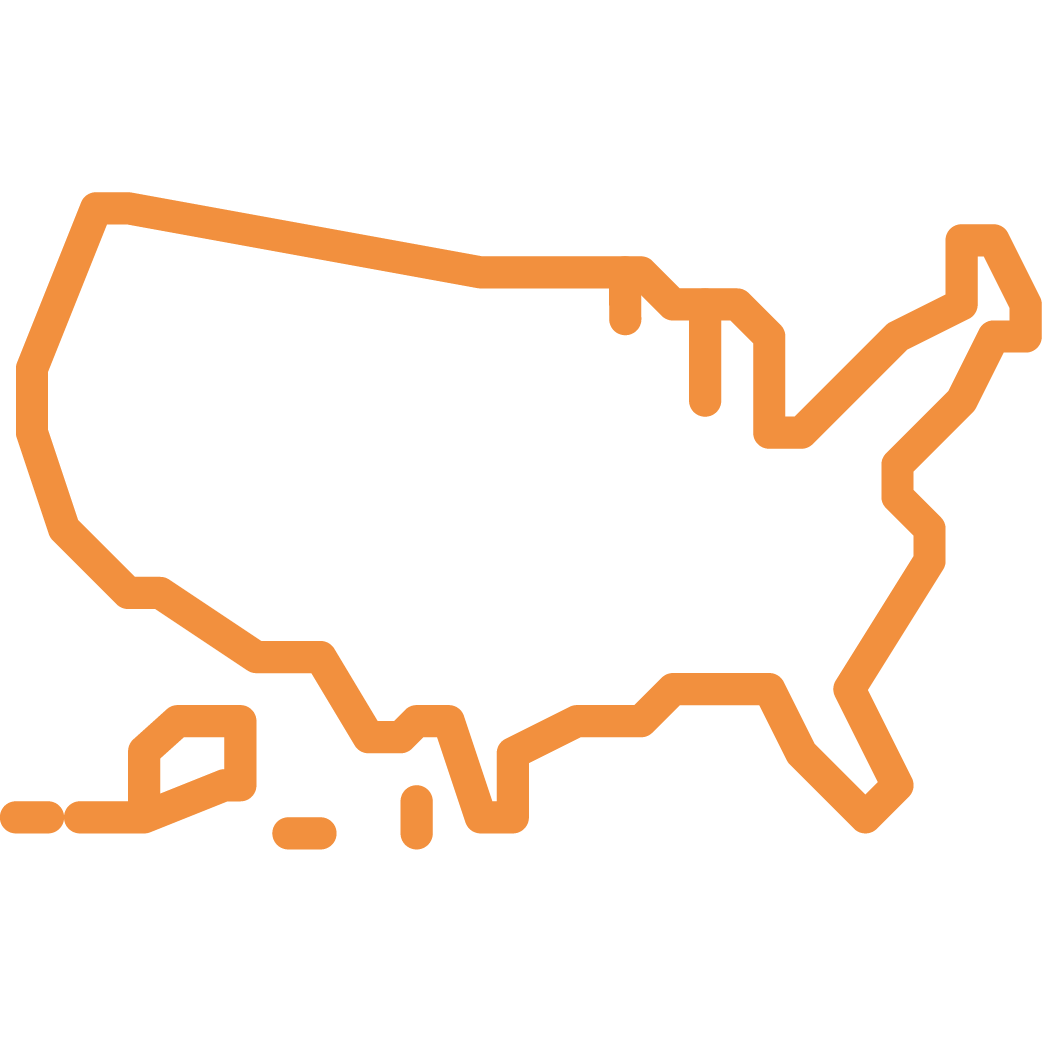If you’re just starting to learn how to paint, acrylic is a great place to begin. It’s got the simplicity of watercolour and the forgiving nature of oils, whilst still being as bold and versatile as both.
These easy acrylic paintings show that the medium can bring brightness and delicacy to even the most basic ideas, and even if you end up preferring watercolour or oils, trying a few of them out is a great way to dig the foundations on which you’ll be able to build your painting skills.
Is gesso necessary for acrylic painting?
You might have seen gesso in your local art shop – it usually comes in large tubs and it looks like white acrylic. But the two aren’t interchangeable. Gesso is thinner and less glossy than acrylic, and its main use is to prepare your canvas for painting by creating an acrylic-proof texture on the surface.
This way, the acrylic won’t soak into the canvas when you start painting and lose its characteristic glossy finish. If you’re painting on something other than canvas, such as wood or cardboard, a couple of coats of gesso will make sure your acrylic isn’t absorbed by the surface and doesn’t lose its shine.
Most canvases come pre-primed – unprimed canvas is more of a beige colour, so the bright white canvases that are most common in art shops and online usually have a coat of gesso on them already. You can paint straight onto these with no preparation.
However, if like me you prefer an even glossier finish to your paintings, you can apply a coat or two of gesso over the top of your primed canvas. The more gesso you apply, the smoother your canvas will be, so it’s really down to personal preference.
Acrylic Paint by Numbers for Beginners
Painting by numbers is a brilliant way to begin your painting journey. It allows you to become familiar with the medium without the hassle of trying to get the correct proportions and perspective, which is an art in itself.
By using a template, you’re still learning a lot: how best to hold the brush, how much paint to load it with, and the ratios of water to paint for different textures and effects. It’s also a much more relaxing way to paint – you can let yourself become enraptured by the process of painting rather than agonizing over your sketches.
No matter what your level of skill, you’re guaranteed a beautiful end product. Elements such as design and composition will come much more naturally once you’re used to the medium. Therefore, beginners' paint by numbers is an excellent way to get started & used to the painting process.
Abstract and Modern Colourful Cat
This cat paint by numbers is great for the expressive beginner who’s drawn to bold and vibrant colours.
The abstract style means there’s no tricky textures to get your head around and the large areas of colour make this one of the easier paintings to complete, yet you’ll still be able to improve upon your painting skills with delicate details such as the nose and whiskers.

Click here to paint the abstract cat
Bathing Beauties
It might look more difficult, but the impressionistic style of this painting means it’s well-suited to beginners. The light in the background of the painting and the subtle changes in the colours, as a result, is a crucial lesson in how these two elements interact.
The details are soft and fluid, meaning a wider margin for error, and for those of you looking to create Turner-esque masterpieces, it’s a brilliant introduction to a freer style of brushwork.

Click here to paint the bathing beauties
Shell Picking
Contrast is the key to this painting – if you’re looking to improve your understanding of how lighting affects shadows and colours, this is the place to start.
The detailing in the girl’s hair and clothes will help you develop a steady hand, and the variety of textures, including the wicker basket and the froth of the sea, will bring your skills forward in leaps and bounds.
Even though it might be lacking depth, it's one of my favorite beach scenes paint by numbers.

Scotland’s Highlands
For those of you who’d like to pursue the landscape paint by numbers, this is the painting for you. The shapes are simple and there are no tricky areas of intricate detail, but the way the colours change with light and distance is a very important aspect of landscapes and one that this painting embodies perfectly.

The Hungry Pug
If landscapes aren’t your thing, this light-hearted pug painting might be more your style. There are elements of it that are very easy – the background and foreground, for example, are simple areas of flat colour – but don’t let this fool you.
The pug itself involves many different textures, such as the eyes and whiskers, and the fur especially will allow you to develop an eye for intricate details.

Normandy Lighthouse Watching Over the Sailors
This painting is perfect for beginners looking to challenge themselves and advance their painting skills. It includes lots of different textures, from the fluffy wisps of clouds in the sky to the crash of the waves against the rocks and the reflection of the lighthouse in the rock pool.
The strong light and deep shadows make this a varied and exciting lighthouse painting by numbers to have a go at.

Paint the lighthouse paint by numbers
Robin on a Branch
If you’re a little less confident in your skills, this birds paint by numbers might be a better fit for you.
It’s still a varied painting, with fine details in the flower and the robin, and the vibrant colours of spring to entice the eye, but the absence of middle ground and the soft contrasts mean it’s not quite so challenging and will make for a more therapeutic painting experience.
A walk at low tide
Portraits are notoriously difficult to paint, but having a go at this vintage paint by numbers will give you an introduction to the tricky art of painting the human face.
Even if you’re not particularly drawn to portraits, this is a brilliant place to start for the ambitious beginner – the fine details and patterns of the headdress and the low angle perspective mean you’ll be well-practiced in many areas of acrylic painting by the time you’ve finished this challenging paint by numbers.

Easy Acrylic Painting Tutorials
Acrylic Pumpkin
This tutorial is very easy to follow – the artist walks you through every step so you not only understand what she’s doing but why she’s doing it. It might not look very challenging, but mixing the background and foreground colours smoothly is tricky with acrylic and great practice for future paintings.
Birch Trees
If your approach to painting is more hands-on, this simple birch tree is a great place to start. You’ll learn how to use masking tape to cover the areas of trees when you paint the background and use a piece of plastic or cardboard to smudge the black paint for that lovely birch bark effect.
If you’re feeling very adventurous, you could try the gold leaf heart, but this isn’t essential – you can always leave it out, or draw it on with a marker pen.
Poppy Flowers
This is one of my favourites – it’s simple, beautiful and utilises the thick, glossy finish of acrylic. The artist uses a gel medium in order to thicken the paint even further, but you don’t have to use this if you don’t want to – you’ll be able to get that textured effect with acrylic alone.
Milk Jug
This tutorial is very detailed and also comes with videos explaining each step, so you’ll be able to follow the artist’s every move. Sketching and painting still life like this is a centuries-old practice for people looking to improve their art skills – it might not be the most exciting end result, but you’ll learn a whole lot about proportion, texture, light, and shadow through this tutorial.
Landscape Painting
This tutorial is a little more advanced, but a must-try for the aspiring landscape painter. The artist is working outdoors and painting his surroundings, but you could work from the photograph he uses or even go and find a beautiful view like this yourself.
If you do decide to paint outdoors, I’d recommend taking a spray bottle like this artist suggests, as the acrylic will dry in the blink of an eye if you don’t keep it moist.
Autumn Bridge
If you fancy something a little more whimsical, you might want to have a go at this adorable autumn bridge painting.
The tutorial even includes a template for the bridge and lamppost, so if even you’re not too confident in your sketching skills, you’ll still end up with a lovely painting. Likewise, if you’d like to have a go at drawing the bridge, you can skip the parts which use the graphite paper and draw straight onto the background.
Flowers and Fruit
This is a brilliant painting to try if you’d like to experiment with different textures. If you don’t have a notched trowel like the one that’s used in the tutorial to get those wavy lines, you can simply stick with a palette knife or wide brush to get that busy background.
Sunset
This painting is simple and beautiful. In the tutorial, you’ll learn how to get that lovely smooth gradient in the sky, the texture of the waves and the way the sunlight falls on the sea. Don’t worry if your sketching skills leave a lot to be desired – all you’ll need is a pair of compasses (or something circular to draw around) and a ruler to lay the foundations for this painting.
More Painting Ideas for Beginners
- An item of furniture
- A bottle of shampoo
- A flower from your garden
- A coffee mug
- A piece of fruit
- Your dream home
- Your favourite animal
- An ornament
- A sports car
- Your favourite movie star
- A musical instrument
- A farm animal
- A famous landmark
- An autumn leaf
- A setting from your favourite novel
- A sailing ship
- A peacock
- A silhouette in the rain
- A vase
- A piece of cake
- A beach view
- The moon
- Your pets















1 comment
My daughter bought me a Scotland’s highlands print ( WP-PBN – 6160) and I’ve delayed getting into it so long that many of the paints have set up… What are the chances I could purchases the paints only that go with this print?
———
Winnie’s Picks replied:
Hi John, We’ll do that for you and your daughter! You’ll receive an email from Christina with solutions to send you a new paint set. Have a great day, Gaétan